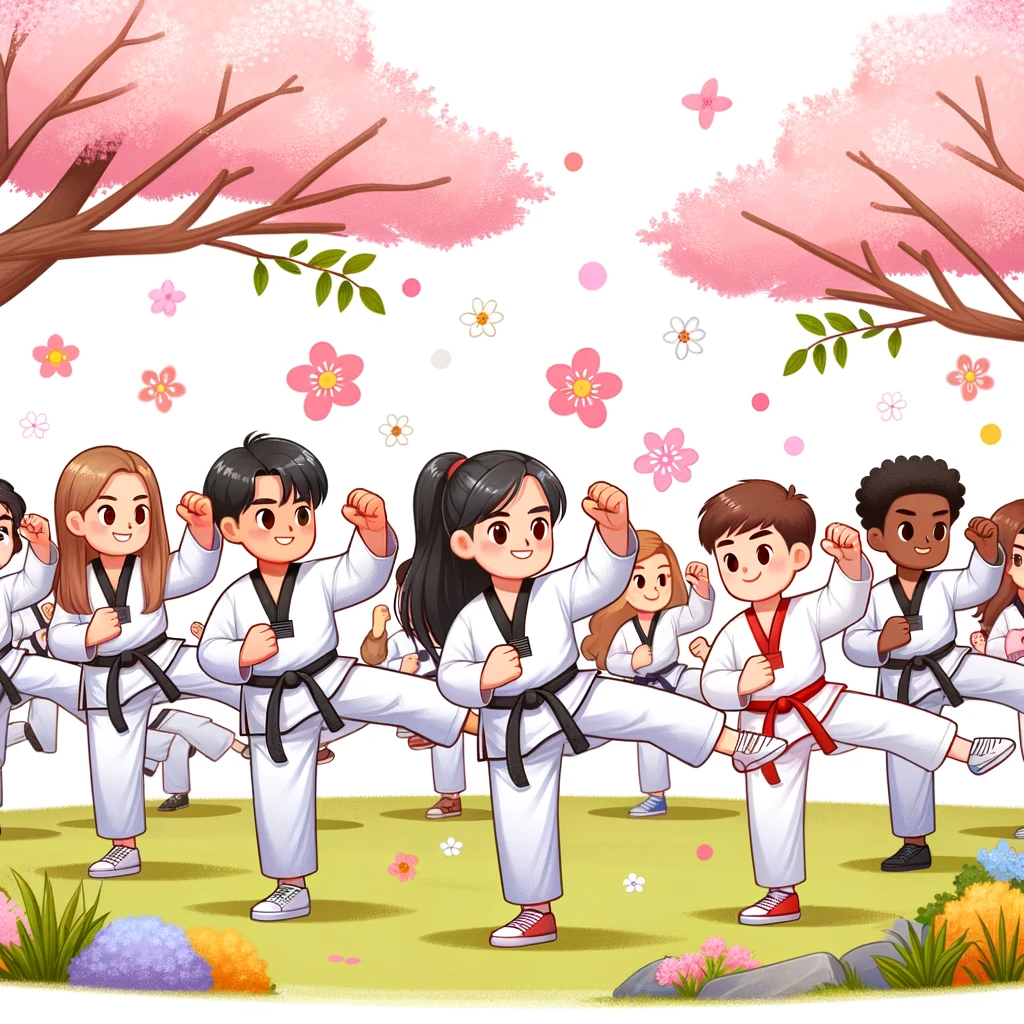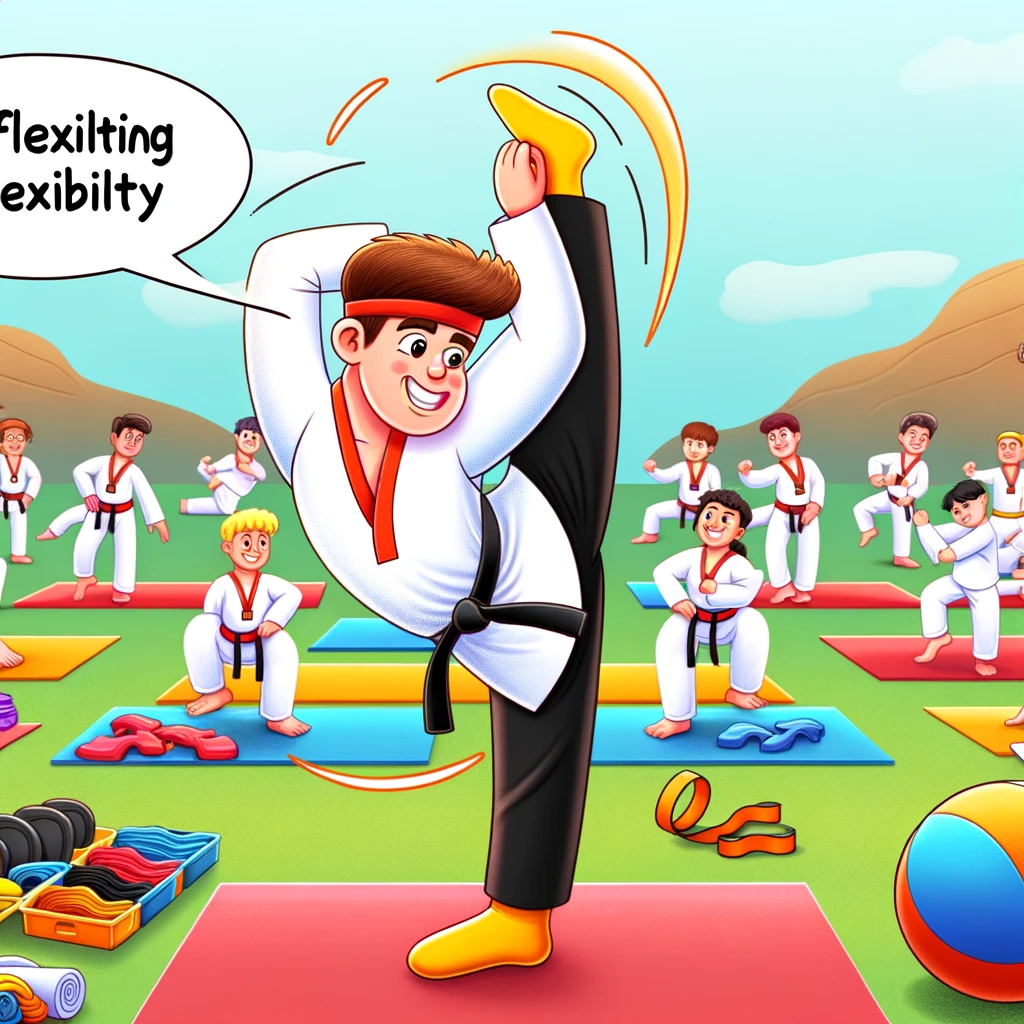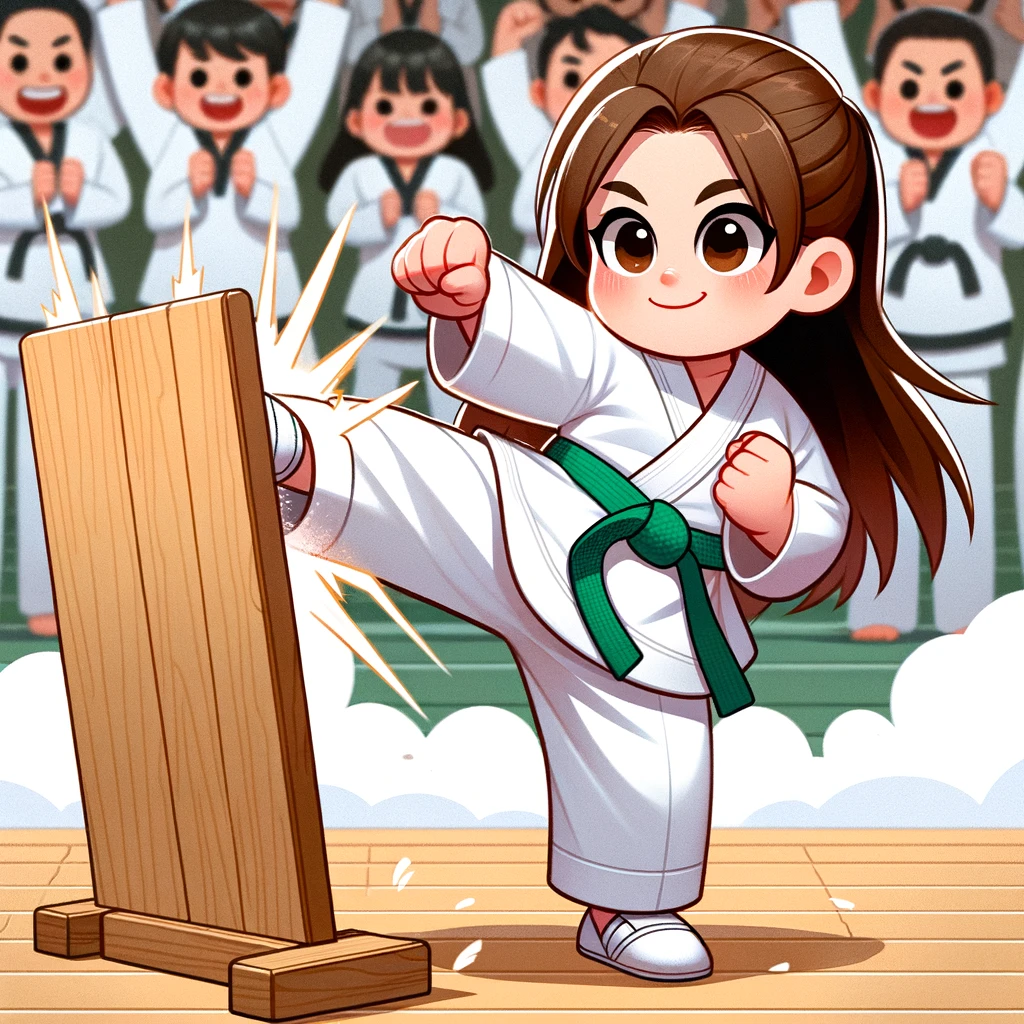Understanding the Benefits of Cross-Training for Tae Kwon Do Practitioners
Cross-training to Enhance Tae Kwon Do Skills refers to the practice of participating in activities other than Tae Kwon Do to enhance overall physical fitness and skill development. It is widely recognised that cross-training in other martial arts or fitness disciplines can significantly benefit practitioners of Tae Kwon Do. By engaging in different activities, athletes can improve their agility, speed, strength, and endurance, which are crucial components of Tae Kwon Do performance. Additionally, cross-training provides an opportunity to learn new techniques, strategies, and movements that can be applied to one’s Tae Kwon Do practice. This exposure to different styles and training methods can broaden a practitioner’s perspective and help them become more well-rounded athletes.
Furthermore, cross-training can reduce the risk of overuse injuries by giving certain muscle groups a break while working on others. For example, Tae Kwon Do primarily utilises the lower body, and repeated kicking motions can strain the muscles and joints. By incorporating upper body exercises from disciplines like boxing or weightlifting, practitioners can build strength and stability throughout their entire body, promoting balanced muscle development and reducing the risk of imbalances or compensatory movement patterns. Additionally, cross-training can help prevent mental burnout by introducing variety into one’s training routine, keeping the motivation high and the training enjoyable.

Exploring Different Types of Cross-Training Exercises for Tae Kwon Do
Cross-training involves incorporating exercises and techniques from other martial arts or fitness disciplines into your Tae Kwon Do training regimen. Doing so can enhance your overall skills and performance in Tae Kwon Do. One benefit of cross-training is learning different techniques and styles, which can broaden your martial arts knowledge and make you a more versatile practitioner. For example, practising Brazilian Jiu-Jitsu can improve your grappling skills and ground game, while training in Muay Thai can enhance your striking abilities and clinch work. By exploring different types of cross-training exercises, you can better understand martial arts and improve your Tae Kwon Do skills.
In addition to expanding your martial arts repertoire, cross-training in other disciplines can also help improve your overall fitness and physical conditioning. For instance, incorporating exercises like weightlifting or plyometrics into your training routine can enhance your strength, power, and explosiveness, which are crucial attributes for Tae Kwon Do practitioners. Furthermore, engaging in yoga or Pilates can improve your flexibility, balance, and body control, which is essential for executing precise and dynamic kicks in Tae Kwon Do. By exploring different types of cross-training exercises, you can target specific areas of fitness that may need improvement and elevate your Tae Kwon Do performance to new heights.
How Strength Training Can Improve Tae Kwon Do Performance
Strength training plays a crucial role in improving Tae Kwon Do performance. By incorporating it into their training regimen, practitioners can develop more extraordinary power, speed, and agility, which are essential for success in this martial art. Strength training exercises such as weightlifting, resistance, and bodyweight can help athletes build solid muscles and improve their overall physical fitness. This, in turn, can enhance their kicking and punching techniques and their ability to generate explosive strikes.
One of the key advantages of cross-training in other martial arts or fitness disciplines is the opportunity it provides to target different muscle groups. Tae Kwon Do mainly focuses on leg strength and flexibility, but strength training can also help develop the upper body. By incorporating exercises that target the core, chest, back, and arms, practitioners can achieve a more balanced physique and improve their overall performance. Additionally, cross-training can expose athletes to different training techniques and strategies, offering a fresh perspective and helping to prevent monotony in their workouts.

The Importance of Flexibility Training in Enhancing Tae Kwon Do Skills
Flexibility training plays a crucial role in enhancing Tae Kwon Do skills. The ability to move fluidly and easily is essential for effectively executing techniques. By incorporating regular flexibility exercises into their training routine, Tae Kwon Do practitioners can improve their range of motion, joint mobility, and overall flexibility. This helps prevent injuries and allows them to perform high kicks, quick spins, and dynamic movements with greater efficiency and precision. Additionally, by increasing their flexibility, martial artists can achieve better balance and body control, enabling them to adapt more effectively to different situations in the ring or on the mat.
In addition to specific stretching exercises, cross-training in other martial arts or fitness disciplines can enhance Tae Kwon Do skills. Many martial arts, such as yoga or Brazilian Jiu-Jitsu, focus heavily on flexibility and body awareness. By exploring these disciplines, Tae Kwon Do practitioners can gain new insights into their body mechanics and learn different stretching techniques that may not be traditionally used. This cross-training approach can enhance their flexibility training, improve their overall performance, and broaden their knowledge of martial arts. Additionally, incorporating varied training methods can prevent boredom, keeping practitioners motivated and enthusiastic about their Tae Kwon Do journey.
• Regular flexibility exercises improve range of motion, joint mobility, and overall flexibility
• Helps prevent injuries and allows for efficient execution of techniques
• Enables high kicks, quick spins, and dynamic movements with precision
• Enhances balance and body control for better adaptation to different situations in the ring or on the matt Incorporating cross-training in other martial arts or fitness disciplines can also enhance Tae Kwon Do skills:
• Martial arts like yoga or Brazilian Jiu-Jitsu focus heavily on flexibility and body awareness
• Provides new insights into body mechanics and different stretching techniques
• Broadens knowledge of martial arts as a whole
Varied training methods prevent boredom:
• Keeps practitioners motivated and enthusiastic about their Tae Kwon Do journey
Enhancing Balance and Coordination through Cross-Training for Tae Kwon Do
Cross-training in other martial arts or fitness disciplines can offer numerous benefits for Tae Kwon Do practitioners looking to enhance their balance and coordination. Practitioners can improve their overall body control and proprioception by incorporating different training methods and exercises from disciplines such as yoga, ballet, or gymnastics.
One of the key advantages of cross-training is the opportunity to challenge the body and mind in new ways. Tae Kwon Do practitioners can develop a more well-rounded skillset by exposing themselves to different movements, positions, and techniques. For instance, practising yoga can improve flexibility, body awareness, and balance, all essential for executing precise and controlled Tae Kwon Do techniques. Similarly, ballet can enhance the coordination and fluidity of movements, allowing practitioners to be more graceful and efficient in their Tae Kwon Do kicks and strikes. By exploring other disciplines, practitioners can discover new ways to enhance their balance and coordination, ultimately improving their overall performance in Tae Kwon Do.
Cardiovascular Conditioning for Tae Kwon Do: Beyond Kicking and Punching
Cardiovascular conditioning is an essential aspect of Tae Kwon Do training beyond traditional kicking and punching techniques. While these movements certainly contribute to developing cardiovascular fitness, exploring cross-training in other martial arts or fitness disciplines can bring additional benefits. By incorporating activities such as running, swimming, or cycling, practitioners can improve their endurance and stamina, which are crucial for sustained performance in Tae Kwon Do.
One option for cross-training is to explore martial arts styles that focus on different aspects of combat, such as Brazilian Jiu-Jitsu or Muay Thai. These disciplines can provide valuable insights and techniques that can be applied in Tae Kwon Do, enhancing overall skill and versatility. Additionally, participating in activities like yoga or Pilates can improve flexibility and balance, helping Tae Kwon Do practitioners perform intricate kicks and stances with greater ease. By diversifying their training regimen, Tae Kwon Do practitioners can acquire a broader range of skills, gain a deeper understanding of martial arts principles, and ultimately enhance their performance.
Incorporating Plyometric Exercises to Boost Tae Kwon Do Performance
Plyometric exercises or jump training are valuable additions to any Tae Kwon Do training program. These types of exercises focus on explosive movements involving rapid stretching and muscle contracting, leading to improved power and speed. By incorporating plyometric exercises into their routine, Tae Kwon Do practitioners can enhance their jumping, kicking, and punching abilities, ultimately boosting their overall performance.
One of the key benefits of integrating plyometric exercises into Tae Kwon Do training is improving lower body strength. Plyometrics heavily engage the muscles of the legs and hips, increasing their power and endurance. This mainly benefits Tae Kwon Do practitioners, as powerful kicks and explosive movements are essential to martial arts. Additionally, plyometric exercises help to improve balance and coordination, allowing practitioners to execute precise movements with greater control and accuracy. Plyometrics can be crucial in optimising Tae Kwon Do performance in combination with other cross-training exercises.
Mental Training Techniques to Complement Tae Kwon Do Cross-Training
Mental training techniques play a crucial role in complementing Tae Kwon Do cross-training. While physical conditioning and technique refinement are essential aspects of training, developing a strong mental game can significantly enhance a practitioner’s performance. By incorporating mental training techniques into their training routine, Tae Kwon Do practitioners can improve their focus, concentration, and mental resilience, ultimately elevating their overall performance on and off the mat.
One way to enhance mental training is by exploring cross-training in other martial arts or fitness disciplines. Engaging in yoga, Pilates, or meditation activities can help Tae Kwon Do practitioners develop mindfulness, body awareness, and control over their mental state. These practices can assist in reducing stress, improving mental clarity, and honing the ability to stay present in high-pressure situations. Additionally, cross-training in disciplines like boxing or jiu-jitsu can introduce new perspectives and strategies, expanding a Tae Kwon Do practitioner’s skill set and problem-solving abilities. By incorporating these mental training techniques and exploring cross-training opportunities, Tae Kwon Do practitioners can further optimise their performance and reach their full potential in the sport.
The Role of Yoga and Pilates in Enhancing Tae Kwon Do Skills
Practising Tae Kwon Do alone can greatly improve one’s martial arts skills, but incorporating cross-training in other disciplines, such as yoga and Pilates, can further enhance overall performance. Yoga, known for its emphasis on flexibility and mental focus, can significantly improve joint mobility and range of motion. This increased flexibility can benefit Tae Kwon Do practitioners, allowing for deeper kicks, higher jumps, and more fluid movements. Additionally, the meditative aspect of yoga promotes mental clarity and concentration, essential qualities for a successful Tae Kwon Do practitioner.
Conversely, Pilates focuses on core strength and stability, crucial for executing powerful and precise movements in Tae Kwon Do. Tae Kwon Do practitioners can generate more power in their strikes and maintain better balance during complex manoeuvres by improving core strength. Pilates also emphasises proper alignment, helping to prevent injuries and improve overall body awareness. Incorporating yoga and Pilates into a cross-training routine can provide Tae Kwon Do practitioners with a well-rounded approach to their training, addressing both the physical and mental aspects of their practice.

Designing a Cross-Training Program to Optimize Tae Kwon Do Performance
To optimise Tae Kwon Do’s performance, designing a cross-training program that incorporates elements from other martial arts or fitness disciplines can be incredibly beneficial. By diversifying training techniques, practitioners can develop a well-rounded skill set that improves their Tae Kwon Do techniques and enhances overall fitness and athleticism.
One way to incorporate cross-training is by exploring other martial arts disciplines like Brazilian Jiu-Jitsu or Muay Thai. These disciplines offer different types of movements, strategies, and techniques that can complement Tae Kwon Do training. For example, Brazilian Jiu-Jitsu focuses on ground fighting and submission holds, which can improve a Tae Kwon Do practitioner’s grappling skills and overall body awareness. Likewise, Muay Thai emphasises knee and elbow strikes, clinching, and close-range combat, providing valuable insights into close-quarters combat that can enhance a Tae Kwon Do practitioner’s adaptability and versatility in various scenarios. Cross-training in other martial arts disciplines can also provide a fresh perspective and boost motivation by introducing new challenges and goals to strive for.

What is cross-training?
Cross-training refers to engaging in different types of exercises or activities that complement and enhance the skills and performance of a specific sport or discipline, such as Tae Kwon Do.
Why is cross-training beneficial for Tae Kwon Do practitioners?
Cross-training offers several benefits for Tae Kwon Do practitioners, including improved strength, flexibility, balance, coordination, cardiovascular endurance, mental focus, and injury prevention.
What are some examples of cross-training exercises for Tae Kwon Do?
Examples of cross-training exercises for Tae Kwon Do include strength training exercises like weightlifting, flexibility training exercises like yoga, cardiovascular exercises like running or cycling, and plyometric exercises like jumping and bounding.
How can strength training improve Tae Kwon Do performance?
Strength training can enhance Tae Kwon Do performance by increasing muscular strength, power, and endurance, which are essential for executing powerful kicks, punches, and other movements in Tae Kwon Do.
Why is flexibility training important for enhancing Tae Kwon Do skills?
Flexibility training is crucial for Tae Kwon Do practitioners as it improves the range of motion, joint mobility, and overall flexibility, enabling them to execute high kicks, fast movements, and perform techniques with proper form.
How does cross-training enhance balance and coordination for Tae Kwon Do?
Cross-training exercises that focus on balance and coordination, such as yoga and Pilates, can help Tae Kwon Do practitioners develop better body control, stability, and spatial awareness, which are essential for executing precise techniques and maintaining balance during movements.
How does cardiovascular conditioning beyond kicking and punching benefit Tae Kwon Do?
Engaging in cardiovascular exercises like running, swimming, or cycling improves cardiovascular endurance, which is crucial for sustaining high-intensity movements and maintaining energy levels throughout Tae Kwon Do training and competitions.
What are plyometric exercises, and how do they boost Tae Kwon Do performance?
Plyometric exercises involve explosive, jumping movements that improve power, speed, and agility. By incorporating plyometric exercises into a cross-training program, Tae Kwon Do practitioners can enhance their ability to generate explosive force for dynamic techniques and quick movements.
How can mental training techniques complement Tae Kwon Do cross-training?
Mental training techniques, such as visualization, mindfulness, and focus exercises, can help Tae Kwon Do practitioners improve mental resilience, concentration, and performance under pressure, ultimately enhancing their overall performance in training and competitions.
What role do yoga and Pilates play in enhancing Tae Kwon Do skills?
Yoga and Pilates can improve Tae Kwon Do skills by enhancing flexibility, core strength, body awareness, breath control, and mental focus. These practices also help prevent injuries and promote overall physical and mental well-being.
How can one design a cross-training program to optimize Tae Kwon Do performance?
Designing a cross-training program for Tae Kwon Do involves incorporating a variety of exercises that target different aspects such as strength, flexibility, balance, coordination, cardiovascular endurance, and mental focus. It is important to consider individual goals, skill levels, and specific areas of improvement when designing a program. Consulting with a qualified Tae Kwon Do coach or trainer can also be beneficial in designing an effective and personalized cross-training program.







